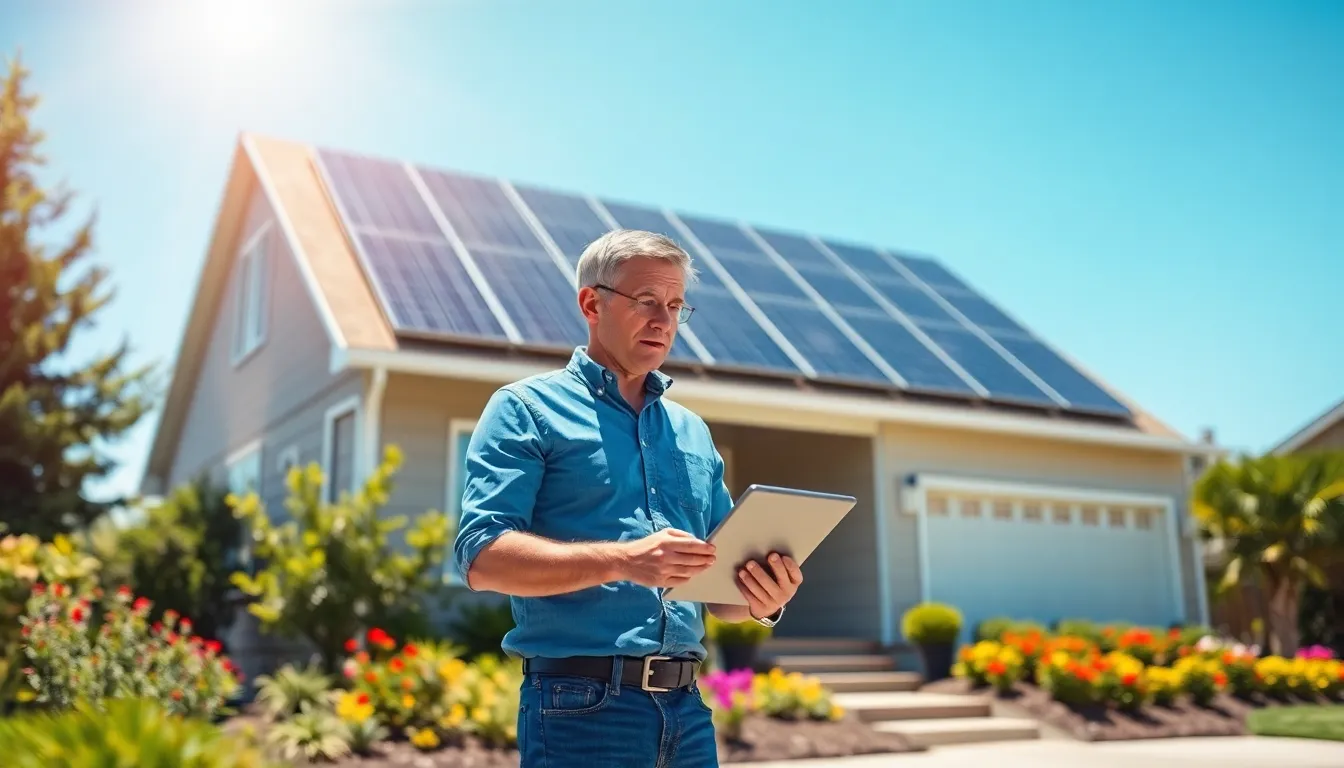Table of Contents
ToggleIn today’s world, the transition to renewable energy sources is more crucial than ever, with solar power leading the charge. But, navigating the financial aspect of installing solar panels can be daunting. This article aims to demystify solar energy financing, providing insights into the available options, the benefits of adopting solar power, and future trends in solar home financing. Whether one is a homeowner considering solar energy or simply curious about renewable options, understanding these components is vital for a successful transition.
Understanding Solar Energy Financing

Solar energy financing refers to the financial tools and arrangements that enable homeowners to install solar panel systems. This process is crucial for making solar energy accessible, as the upfront costs can be significant. Understanding these financing options is essential for homeowners looking to reduce their energy bills while making an environmentally friendly choice.
The basic premise of solar financing is to help homeowners spread out the cost of solar installations over time or minimize the upfront costs. Various options cater to different financial situations, making it easier than ever to switch to renewable energy.
Types of Solar Financing Options
When considering solar energy, homeowners have several financing options:
1. Cash Purchase
Paying upfront in cash allows homeowners to avoid interest charges and reap the benefits of solar savings immediately. This method also often qualifies the homeowner for federal tax credits.
2. Solar Loans
Solar loans can be secured through banks or specialized solar finance companies. These loans allow homeowners to pay for the solar system over a specific period while benefiting from the energy savings.
3. Leasing
In solar leasing, the homeowner pays a monthly fee to use the solar system installed on their property. This option can significantly lower upfront costs, but it also comes with less control over the system.
4. Power Purchase Agreements (PPAs)
PPAs involve homeowners paying for the actual electricity generated by the solar system rather than the system itself. This arrangement generally provides savings compared to traditional electricity rates.
Benefits of Going Solar
Though the financial aspect of solar energy is critical, the benefits extend beyond cost savings:
- Lower Electricity Bills: Homeowners can save money as solar energy reduces reliance on the grid.
- Increase in Home Value: Properties equipped with solar panels often have higher market values compared to those without.
- Environmental Impact: Solar power contributes to reducing carbon emissions, promoting a cleaner environment.
- Energy Independence: Generating renewable energy on-site brings a level of energy independence, protecting homeowners from rising utility costs.
Navigating the Solar Financing Process
Successfully financing a solar installation involves several steps:
- Research: Homeowners should investigate various providers and financing options available in their area, considering reviews, ratings, and features.
- Consultation: Engaging with a solar finance expert can help clarify which financing option aligns best with individual financial situations.
- Application: After choosing a financing method, the homeowner will need to fill out necessary applications, which may include submitting financial documents.
- Installation: Once approved, the installation timeline can begin, involving a verification process by the lender.
Tips for Choosing the Right Financing Solution
Choosing the right solar financing option means evaluating individual needs and long-term impacts. Here are some tips:
- Evaluate Financial Situation: Consider current finances and whether an upfront payment or monthly obligation fits best.
- Understand Contracts: Thoroughly review contracts for lease and PPA options, ensuring clarity on terms and exit strategies.
- Check for Incentives: Many local governments offer incentives for solar energy installations. Make sure to understand and factor in these opportunities.
- Seek Reliable Providers: Engaging with reputable solar installers and financiers can make the process smoother and enhance satisfaction.
The Future of Solar Home Financing
As the demand for renewable energy grows, so does the innovation in solar financing. Future trends may include:
- Increased Flexibility: More customizable financing options, tailored to individual energy needs and financial situations.
- Integration with Smart Home Technology: Financing solutions that align with energy storage systems, allowing for more effective energy consumption management.
- Cryptocurrency Solutions: With the rise of digital currencies, financing methods using cryptocurrencies could become a groundbreaking trend in solar energy financing.
Conclusion
Eventually, navigating the world of solar energy financing might seem complex, but it offers a path towards sustainable living and substantial savings. By understanding the various financing options available, weighing their benefits, and keeping an eye on future trends, homeowners can make informed decisions that align with their financial goals while supporting a healthier planet. Transitioning to solar energy is not just an investment in home value: it’s a commitment to renewable resources and environmental responsibility.







